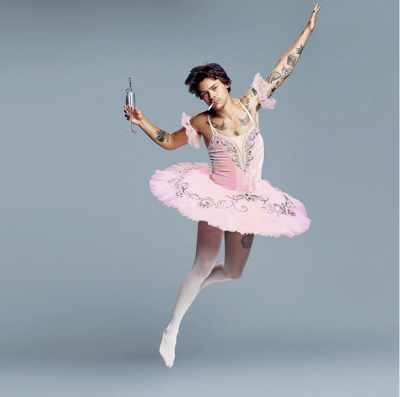Gender roles have proven to be a deadly social construct. Simply being male puts one at a greater risk of suicide; a pattern that remains consistent year after year. The stereotypes forced upon men have made them less likely than women to seek help concerning mental health problems. It’s remained a long-standing expectation that a man needs to be strong enough on his own, and when faced with a struggle, he must “suck it up.” However, there’s hope for a brighter future as the open-minded Generation Z stands to combat this harmful way of thinking.
Gen Z has become known for its outspoken fervor for social change. The young generation has raised a radical shift in attitudes toward gender, sexuality, identity and mental health. A recent trend gaining traction is the acceptance and support of men who defy masculine gender stereotypes through presenting themselves in a traditionally feminine way.
TikTok has become a platform for male users to openly express themselves by wearing skirts, dresses, nail polish or makeup. Boys who dress in a feminine manner are often referred to as “femboys,” and the way they prefer to dress has nothing to do with their sexuality. On social media, these teens are often met with praise in the form of likes and overwhelmingly positive comments. These individuals who boldly defy gender roles play an important part in normalizing the idea that clothes have no gender.
Unfortunately, a man wearing a dress continues to horrify many in the older generations. This was most recently proven by Vogue’s December issue featuring pop artist Harry Styles in a frilly, blue dress. Styles’ outfit caused an uproar across social media, at the center of which were conservative thinkers Candace Owens and Ben Shapiro. Owens responded to a tweet from Vogue promoting the issue on Styles saying, “bring back manly men.” She claimed that the image was promoting the feminization of men and had the power to lead to the downfall of society. Fans of Styles were quick to respond in support of the singer. On Twitter,user Kaya-marie Grigsby said, "An article of clothing does not mean a man is not strong. An article of clothing does not determine who a person is.”
The fact that one man in a dress was so threatening to so many people’s idea of masculinity proves what a fragile concept it really is. Men who can feel confident enough in their own skin to freely express themselves however they want are truly strong. Their ability to break the norm and get creative with their self-expression, even in the face of backlash, is attractive. As explained by Styles in an interview with Vogue, with fashion, “It’s like anything — anytime you’re putting barriers up in your own life, you’re just limiting yourself. There’s so much joy to be had in playing with clothes.”
This movement to defy the rigid male gender stereotypes by dressing femininely is a small step in the right direction. Still, many boys who can comfortably post a picture of their makeup on social media might never consider wearing the look out in public. Yet I remain hopeful that the trend in redefining masculinity only grows. If society can progress by loosening its strict stereotype of masculine appearance, then there’s hope in redefining what it means to be strong.
Breaking down the outwardly observable barriers separating men and women could lead to breaking down the internal ones as well. Embracing what’s traditionally feminine could encourage men to open up and communicate their emotions. A world where men are more likely to start a conversation surrounding mental health and seek help when they need it would only create a stronger society.
Rachel Gordon is a freshman media arts and design major. Contact Rachel at gordo3re@dukes.jmu.edu



